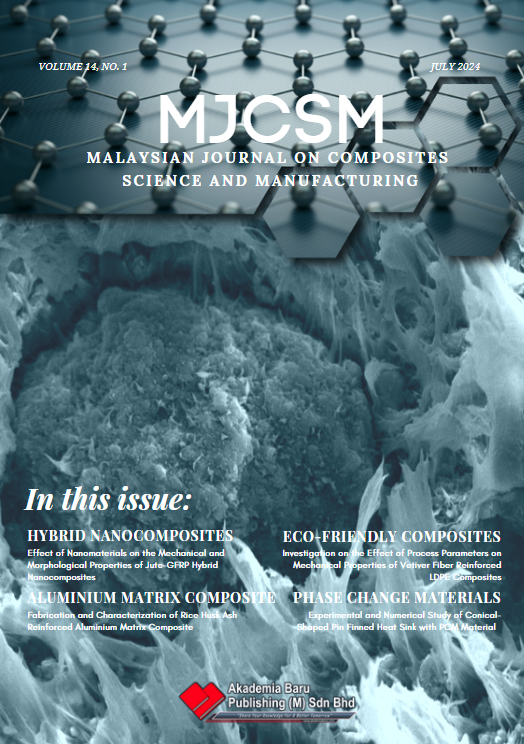Numerical Analysis of Combustion and Emission Characteristics of a Diesel Engine Fueled with 40Butanol/60Diesel Blended Fuel
DOI:
https://doi.org/10.37934/mjcsm.14.1.4457Keywords:
N-Butanol, Diesel, Diesel engine, Injection timing, Exhaust gas recirculation, Combustion, EmissionAbstract
As the energy requirements of power producing systems increase, fossil fuels are becoming rare worldwide. Diesel engines are a common and efficient source of power generation. Nonetheless, several national and international bodies impose restrictions on diesel engine emissions for the environmental safety. So, to reduce the harmful diesel engine emissions, some steps should be followed which include lowering emissions and increasing performance. Butanol is a well-known biofuel which has comparatively lower emission characteristics and higher performance compared to diesel. Blending butanol with diesel can increase the performance and improve the emission characteristics of a diesel engine. A butanol/diesel blend (D60B40) is introduced to a single-cylinder, four-stroke, direct injection diesel engine. The combustion properties, and emissions are examined in this study using ANSYS Forte software. Effects of different SOI or start of injection (30, 26, 22, 18 degree BTDC) are checked. Results shows that early injection leads in greater temperatures, pressures, and heat release rates, which all contribute to a reduction in CO and UHC emissions but costs more NOx emissions. Combustion efficiency is 2.66% higher for 30 degree BTDC than 18 degree BTDC. Thermal efficiency shows 0.2% increase for 18 degree BTDC due to low wall heat transfer loss. NOx emission is 2.983 g/kWh for 30 degree BTDC where 18 degree BTDC had only 0.544 g/kWh. In order to reduce the NOx emission due to increasing blend ratio and advanced SOI, exhaust gas recirculation (EGR) is also investigated (0%, 10%, 20% & 30%) for D60B40 at 30 degree BTDC. At 30% EGR, the investigation reveals an improvement in emission characteristics, with NOx emission of 0.169 g/kWh which was about 90.5% lower than D100. The CO emission increases from 1.485 g/kWh to 5.345 g/kWh which is about 4 times more than 0% EGR. By using a higher butanol/diesel blend of D60B40 with early injection at 30 degree BTDC and EGR rate of 30%, it is feasible to satisfy the standards of many national and international organizations and improve combustion performance.
Downloads












